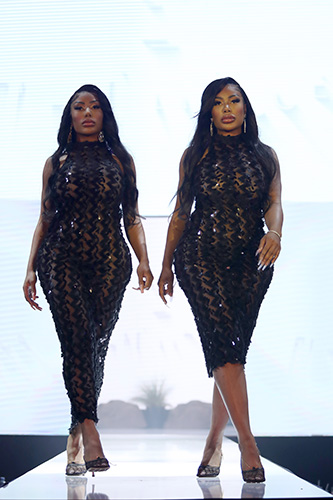A fashion show is an event put on by a fashion designer to showcase their upcoming line of clothing and/or accessories during a fashion week.
The origins of fashion shows remain obscure as historians have yet to conduct a comprehensive study on the subject. One of the designers of this concept, Charles Frederick Worth, gained traction by displaying clothes on actual people instead of mannequins. By the end of the 19th century, “fashion parades” were regularly organized at Paris couture salons. American retailers imported the concept of the fashion show in the early 1900s. The first American fashion show likely took place in 1903 in the New York City store of the Ehrlich Brothers. By 1910, large department stores such as Wanamaker’s in Manhattan and Philadelphia were also staging fashion shows.
These events showed couture gowns from Paris or the store’s copies of them; they aimed to demonstrate the owners’ good taste and capture the attention of female shoppers. As the popularity for these formal presentations expanded, it was in 1918 when fashion houses established fixed dates for runway shows to occur. These occurrences took place twice annually, specifically for fashion houses to plan for and promote their lines to foreign buyers. Runway shows were often held in department stores or hotels when they first began. European fashion houses would actively seek out buyers in the United States, specifically in larger cities, by hosting these runway shows.
Because “the topic of fashion shows remains to find its historian”, the earliest history of fashion shows remains obscure. In the 1800s, “fashion parades” periodically took place in Paris couture salons. At the turn of the 19th century, exclusive fashion houses in Europe, especially Paris and London, were using formal presentations to showcase their latest line to clientele.By the 1920s, retailers across the United States held fashion shows. Often, these shows were theatrical, presented with narratives, and organized around a theme (e.g. Parisian, Chinese, or Russian).
These shows enjoyed huge popularity through mid-century, sometimes attracting thousands of customers and gawkers. In the 1970s and 1980s, American designers began to hold their own fashion shows in private spaces separate from such retailers. In the early 1990s, however, many in the fashion world began to rethink this strategy. Fern Mallis, who was the executive director of the Council of Fashion Designers of America at the time, remembered that following a series of accidents at shows held in small, hazardous venues, the prevailing attitude was, “We love fashion but we don’t want to die for it.”
Fashion shows present the latest seasonal styles, functioning as both a walking art exhibition and a blueprint for fast fashion stores that replicate high fashion designs. While they can sometimes be perceived as shocking, this is often intentional, serving the crucial purpose of generating publicity. For many others, fashion shows also represent a way of life and establish the annual mood.
Photo by Jerritt Clark/Getty Images for Maxie J. / Ellaé Lisqué







Add Comment